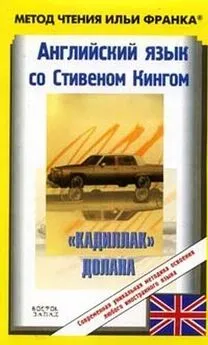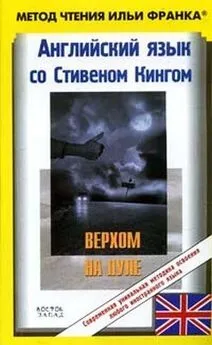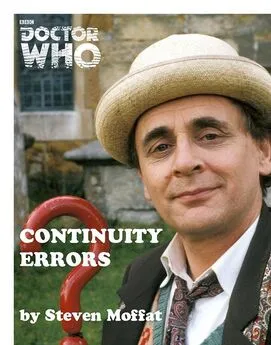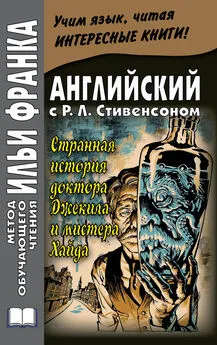Steven Dubner - Freakonomics
- Название:Freakonomics
- Автор:
- Жанр:
- Издательство:неизвестно
- Год:неизвестен
- ISBN:нет данных
- Рейтинг:
- Избранное:Добавить в избранное
-
Отзывы:
-
Ваша оценка:
Steven Dubner - Freakonomics краткое содержание
Freakonomics - читать онлайн бесплатно полную версию (весь текст целиком)
Интервал:
Закладка:
659–61; and Kenneth Arrow, “The Theory of Discrimination,” Discrimination in Labor Markets, ed. Orley Ashenfelter and Albert Rees (Princeton, N.J.: Princeton University Press, 1973).
THE ONLINE DATING STORY: See Dan Ariely, Günter J. Hitsch, and Ali Hortaçsu, “What Makes You Click: An Empirical Analysis of Online Dating,”
University of Chicago working paper, 2004.
VOTERS LYING ABOUT DINKINS / GIULIANI: See Timur Kuran, Private Truths, Public Lies: The Social Consequences of Preference Falsification (Cambridge, Mass.: Harvard University Press, 1995); also Kevin Sack, “Governor Joins Dinkins Attack Against Rival,” New York Times, October 27, 1989; and Sam Roberts, “Uncertainty over Polls Clouds Strategy in Mayor Race,” New York Times, October 31, 1989.
VOTERS LYING ABOUT DAVID DUKE: See Kuran, Private Truths, Public Lies; also Peter Applebome, “Republican Quits Louisiana Race in Effort to Defeat Ex-Klansman,” New York Times, October 5, 1990; and Peter Applebome, “Racial Politics in South’s Contests: Hot Wind of Hate or Last Gasp?” New York Times, November 5, 1990.
DAVID DUKE, MASTER OF INFORMATION ABUSE: Among the many helpful sources for this material were Karen Henderson, “David Duke’s Work-Release Program,” National Public Radio, May 14, 2004; and the exhaustive John McQuaid, “Duke’s Decline,” New Orleans Times-Picayune, April 13,2003.
3. WHY DO DRUG DEALERS STILL LIVE WITH THEIR MOMS?
JOHN KENNETH GALBRAITH’S “CONVENTIONAL WISDOM”: See “The Concept of the Conventional Wisdom,” the second chapter of The Affluent Society (Boston: Houghton Mifflin, 1958).
MITCH SNYDER AND THE HOMELESS MILLIONS: The controversy over Snyder’s activism was covered widely, particularly in Colorado newspapers, during the early 1980s and was revisited in 1990 when Snyder committed suicide. A good overview is provided in Gary S. Becker and Guity Nashat Becker, “How the Homeless ‘Crisis’ Was Hyped,” in The Economics of Life (New York: McGraw-Hill, 1997), pp. 175–76; the chapter was adapted from a 1994
Business Week article by the same authors.
THE INVENTION OF CHRONIC HALITOSIS: The strange and compelling story of Listerine is beautifully told in James B. Twitchell, Twenty Ads That Shook the World: The Century’s Most Groundbreaking Advertising and How It Changed Us All (New York: Crown, 2000), pp. 60–69.
GEORGE W. BUSH AS A MAKE-BELIEVE COWBOY: See Paul Krugman, “New Year’s Resolutions,” New York Times, December 26, 2003.
NOT AS MUCH RAPE AS IS COMMONLY THOUGHT: The 2002 statistics from the National Crime Survey, which is designed to elicit honest responses, suggests that the lifetime risk of a woman’s being the victim of unwanted sexual activity or attempted unwanted sexual activity is about one in eight (not one in three, as is typically argued by advocates). For men, the National Crime Survey suggests a one-in-forty incidence, rather than the one-in-nine incidence cited by advocates.
NOT AS MUCH CRIME AS THERE ACTUALLY WAS: See Mark Niesse,
“Report Says Atlanta Underreported Crimes to Help Land 1996 Olympics,”
Associated Press, February 20, 2004.
SUDHIR VENKATESH’S LONG, STRANGE TRIP INTO THE CRACK DEN: As of this writing, Venkatesh is an associate professor of sociology and African American studies at Columbia University. / 93–99 The biographical material on Venkatesh was drawn largely from author interviews; see also Jordan Marsh,
“The Gang Way,” Chicago Reader, August 8, 1997; and Robert L. Kaiser, “The Science of Fitting In,” Chicago Tribune, December 10, 2000. / 99–109 The particulars of the crack gang are covered in four papers by Sudhir Alladi Venkatesh and Steven D. Levitt: “The Financial Activities of an Urban Street Gang,” Quarterly Journal of Economics 115, no. 3 (August 2000), pp. 755–89;
“‘Are We a Family or a Business?’ History and Disjuncture in the Urban American Street Gang,” Theory and Society 29 (Autumn 2000), pp. 427–62;
“Growing Up in the Projects: The Economic Lives of a Cohort of Men Who Came of Age in Chicago Public Housing,” American Economic Review 91, no. 2 (2001), pp. 79–84; and “The Political Economy of an American Street Gang,” American Bar Foundation working paper, 1998. See also Sudhir Alladi Venkatesh, American Project: The Rise and Fall of a Modern Ghetto (Cambridge, Mass.: Harvard University Press, 2000). / 104Crack dealing as the most dangerous job in America: According to the Bureau of Labor Statistics, the ten most dangerous legitimate occupations are timber cutters, fishers, pilots and navigators, structural metal workers, drivers/sales workers, roofers, electrical power installers, farm occupations, construction laborers, and truck drivers.
THE INVENTION OF NYLON STOCKINGS: It was Wallace Carothers, a young Iowa-born chemist employed by DuPont, who, after seven years of trying, found a way to blow liquid polymers through tiny nozzles to create a fiber of superstrong strands. This was nylon. Several years later, DuPont introduced nylon stockings in New York and London. Contrary to lore, the miracle fabric’s name did not derive from a combination of those two cities’ names. Nor was it, as rumored, an acronym for “Now You’ve Lost, Old Nippon,” a snub to Japan’s dominant silk market. The name was actually a hepped-up rendering of “No Run,” a slogan that the new stockings could not in fact uphold, but whose failure hardly diminished their success. Carothers, a long-time depressive, did not live to see his invention blossom: he killed himself in 1937 by drinking cyanide. See Matthew E. Hermes, Enough for One Lifetime: Wallace Carothers, Inventor of Nylon (Philadelphia: Chemical Heritage Foundation, 1996).
CRACK SLANG: The Greater Dallas Council on Alcohol and Drug Abuse has compiled an extraordinarily entertaining index of cocaine street names. For cocaine powder: Badrock, Bazooka, Beam, Berni, Bernice, Big C, Blast, Blizzard, Blow, Blunt, Bouncing Powder, Bump, C, Caballo, Caine, Candy, Caviar, Charlie, Chicken Scratch, Coca, Cocktail, Coconut, Coke, Cola, Damablanca, Dust, Flake, Flex, Florida Snow, Foo Foo, Freeze, G-Rock, Girl, Goofball, Happy Dust, Happy Powder, Happy Trails, Heaven, King, Lady, Lady Caine, Late Night, Line, Mama Coca, Marching Dust/Powder, Mojo, Monster, Mujer, Nieve, Nose, Nose Candy, P-Dogs, Peruvian, Powder, Press, Prime Time, Rush, Shot, Sleighride, Sniff, Snort, Snow, Snow-birds, Soda, Speedball, Sporting, Stardust, Sugar, Sweet Stuff, Toke, Trails, White Lady, White Powder, Yeyo, Zip. For smokeable cocaine: Base, Ball, Beat, Bisquits, Bones, Boost, Boulders, Brick, Bump, Cakes, Casper, Chalk, Cookies, Crumbs, Cubes, Fatbags, Freebase, Gravel, Hardball, Hell, Kibbles n’
Bits, Kryptonite, Love, Moonrocks, Nuggets, Onion, Pebbles, Piedras, Piece, Ready Rock, Roca, Rock(s), Rock Star, Scotty, Scrabble, Smoke House, Stones, Teeth, Tornado.
THE JOHNNY APPLESEED OF CRACK: Oscar Danilo Blandon and his purported alliance with the Central Intelligence Agency are discussed in great detail, and in a manner that stirred great controversy, in a three-part San Jose Mercury News series by Gary Webb, beginning on August 18, 1996. See also Tim Golden, “Though Evidence Is Thin, Tale of C.I.A. and Drugs Has a Life of Its Own,” New York Times, October 21, 1996; and Gary Webb, Dark Alliance: The CIA, the Contras, and the Crack Cocaine Explosion (New York: Seven Stories Press, 1998). The U.S. Department of Justice later examined the matter in detail in
“The C.I.A.–Contra–Crack Cocaine Controversy: A Review of the Justice Department’s Investigations and Prosecutions,” available as of this writing at www.usdoj.gov/oig/special/9712/ch01p1.htm.
GANGS IN AMERICA: See Frederick Thrasher, The Gang (Chicago: University of Chicago Press, 1927).
THE SHRINKING OF VARIOUS BLACK-WHITE GAPS, PRE-CRACK: See Rebecca Blank, “An Overview of Social and Economic Trends By Race,” in America Becoming: Racial Trends and Their Consequences, ed. Neil J. Smelser, William Julius Wilson, and Faith Mitchell (Washington, D.C.: National Academy Press, 2001), pp. 21–40. / 113 Regarding black infant mortality, see Douglas V.
Almond, Kenneth Y. Chay, and Michael Greenstone, “Civil Rights, the War on Poverty, and Black-White Convergence in Infant Mortality in Mississippi,”
National Bureau of Economic Research working paper, 2003.
THE VARIOUS DESTRUCTIVE EFFECTS OF CRACK are discussed in Roland G.
Fryer Jr., Paul Heaton, Steven D. Levitt, and Kevin Murphy, “The Impact of Crack Cocaine,” University of Chicago working paper, 2005.
4. WHERE HAVE ALL THE CRIMINALS GONE?
NICOLAE CEAU?ESCU’S ABORTION BAN: Background information on Romania and the Ceau?escus was drawn from a variety of sources, including
“Eastern Europe, the Third Communism,” Time, March 18, 1966; “Ceausescu Ruled with an Iron Grip,” Washington Post, December 26, 1989; Ralph Blumenthal, “The Ceau?escus: 24 Years of Fierce Repression, Isolation and Independence,” New York Times, December 26, 1989; Serge Schmemann, “In Cradle of Rumanian Revolt, Anger Quickly Overcame Fear,” New York Times, December 30, 1989; Karen Breslau, “Overplanned Parenthood: Ceau?escu’s Cruel Law,” Newsweek, January 22, 1990; and Nicolas Holman, “The Economic Legacy of Ceau?escu,” Student Economic Review, 1994. / 118 The link between the Romanian abortion ban and life outcomes has been explored in a pair of papers: Cristian Pop-Eleches, “The Impact of an Abortion Ban on Socio-Economic Outcomes of Children: Evidence from Romania,” Columbia University working paper, 2002; and Cristian Pop-Eleches, “The Supply of Birth Control Methods, Education and Fertility: Evidence from Romania,” Columbia University working paper, 2002.
THE GREAT AMERICAN CRIME DROP: As noted earlier, this material is drawn from Steven D. Levitt, “Understanding Why Crime Fell in the 1990’s: Four Factors That Explain the Decline and Six That Do Not,” Journal of Economic Perspectives 18, no. 1 (2004), pp. 163–90. / 120 James Alan Fox’s “intentional overstatement”: See Torsten Ove, “No Simple Solution for Solving Violent Crimes,” Pittsburgh Post-Gazette, September 12, 1999.
POLITICIANS WERE GROWING INCREASINGLY SOFTER ON CRIME: This and a number of related issues are discussed in Gary S. Becker and Guity Nashat Becker, “Stiffer Jail Terms Will Make Gunmen More Gun-Shy,” “How to Tackle Crime? Take a Tough, Head-On Stance,” and “The Economic Approach to Fighting Crime,” all in The Economics of Life (New York: McGraw-Hill, 1997), pp. 135–44; the chapters were adapted from Business Week articles by the same authors.
INCREASED RELIANCE ON PRISONS: Concerning the fifteenfold increase in drug-crime prisoners, see Ilyana Kuziemko and Steven D. Levitt, “An Empirical Analysis of Imprisoning Drug Offenders,” Journal of Public Economics 88, nos.
9–10 (2004), pp. 2043–66. / 123 What if we just turn all the prisoners loose? See William Nagel, “On Behalf of a Moratorium on Prison Construction,” Crime and Delinquency 23 (1977), pp. 152–74. / 123 “Apparently, it takes a Ph.D….”: See John J. DiIulio Jr., “Arresting Ideas: Tougher Law Enforcement Is Driving Down Urban Crime,” Policy Review, no. 75 (Fall 1995).
CAPITAL PUNISHMENT: For a full report on New York State’s failure to execute a single criminal, see “Capital Punishment in New York State: Statistics from Eight Years of Representation, 1995–2003” (New York: The Capital Defender Office, August 2003), which is available as of this writing at nycdo.org/8yr.html. More recently, New York’s Court of Appeals found the death penalty itself unconstitutional, effectively halting all executions. / 125
Читать дальшеИнтервал:
Закладка:






![Юрий Литвин - Stiffen corpses: Жизнь и работа коченеющих трупов [СИ]](/books/1078912/yurij-litvin-stiffen-corpses-zhizn-i-rabota-kochene.webp)


